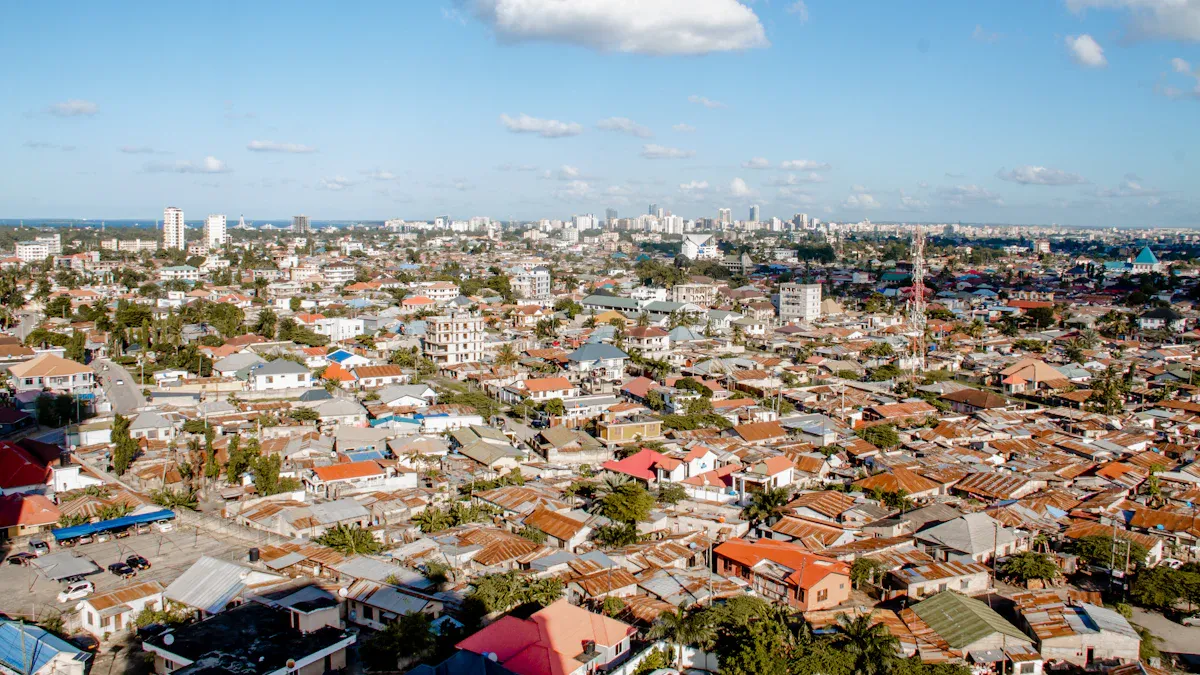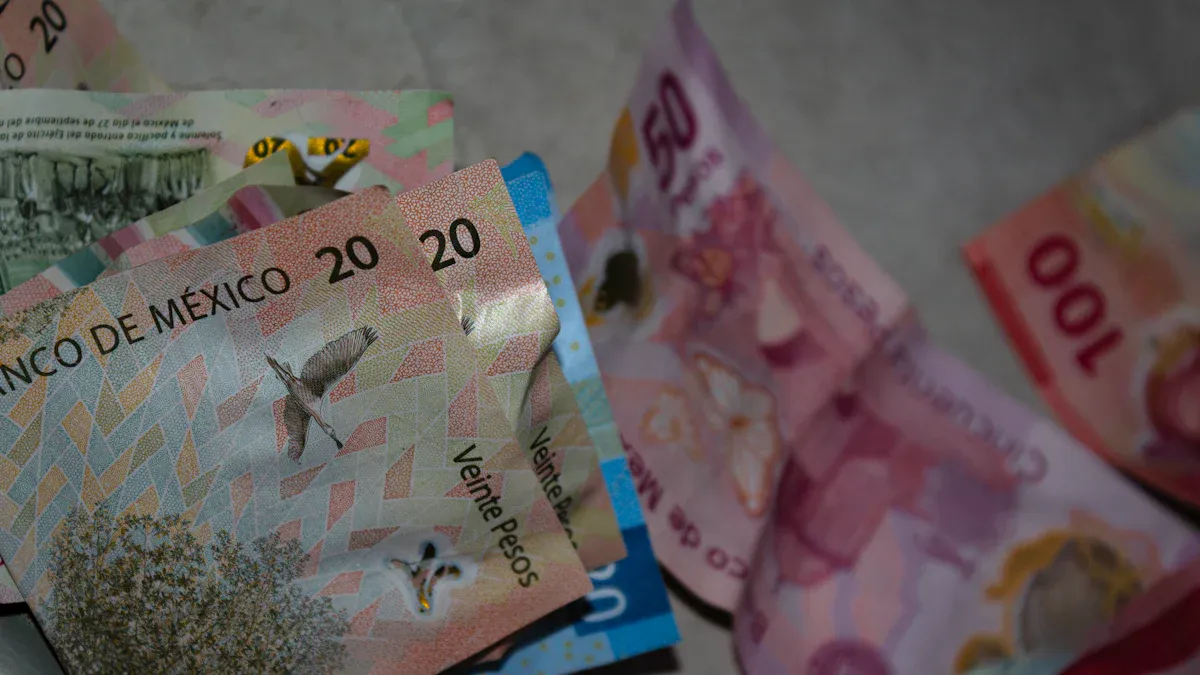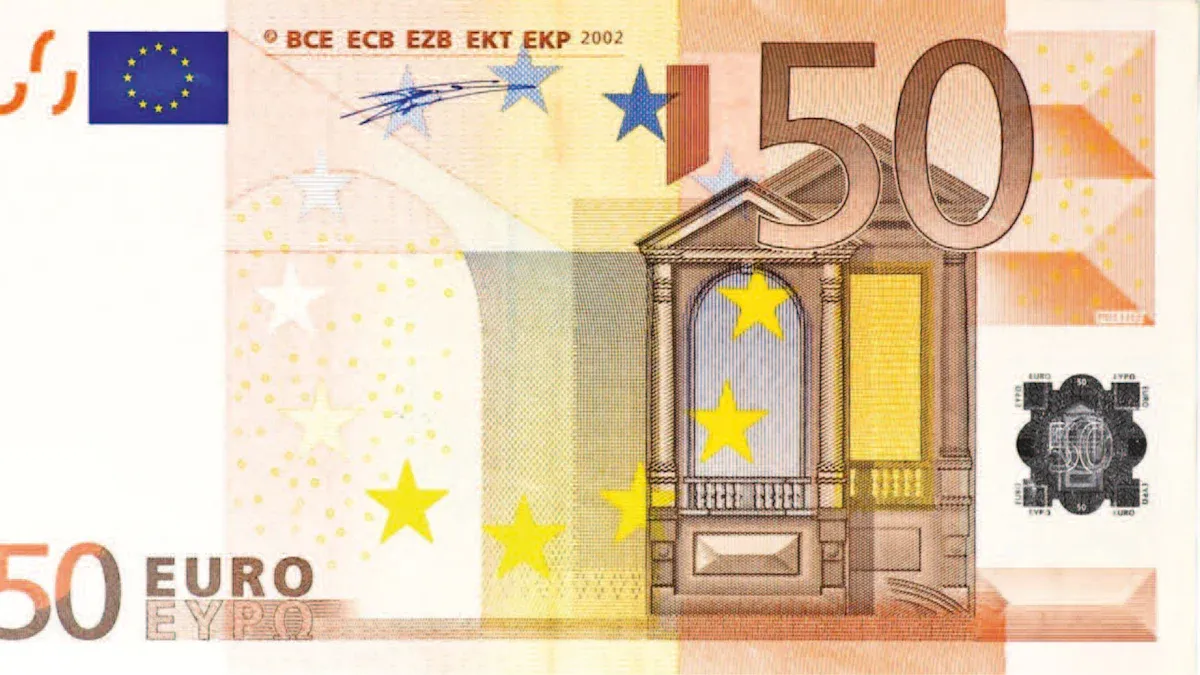- EasyCard
- Trade
- Help
- Announcement
- Academy
- SWIFT Code
- Iban Number
- Referral
- Customer Service
- Blog
- Creator
Colombian Currency: Remittance, Currency Exchange, and Tipping Culture

Image Source: unsplash
With the increase in tourism and business activities in Colombia in 2024, you may be planning a trip to this captivating South American country. As you prepare your itinerary, the first thing you need to do is familiarize yourself with the local official currency—the Colombian peso (COP). Understanding Colombian currency is key to ensuring your financial activities go smoothly. For example, currently 1 euro can be exchanged for approximately 4,513 pesos, giving you a preliminary idea of local price levels. Properly managing your funds will make your journey more relaxed and enjoyable.
Key Takeaways
- Understand the denominations and anti-counterfeiting features of the Colombian peso (COP) to help you avoid receiving fake banknotes.
- In Colombia, you can exchange money at authorized exchange points or withdraw from secure ATMs in banks or shopping centers.
- In Colombia, Visa and Mastercard credit cards are the most commonly used, but you need to inform your bank of your travel plans in advance.
- You can use services like Western Union or Remitly to remit money to Colombia, which are generally more convenient than traditional banks.
- In Colombian restaurants, bills usually include a 10% service charge that you can choose to pay. When tipping other service staff, use Colombian peso cash.
Understanding Colombian Currency (COP)

Image Source: unsplash
Before starting your journey in Colombia, familiarizing yourself with the local Colombian currency is an essential step. This will help you better manage your budget and handle daily expenses.
Currency Denominations and Symbol
The official symbol for the Colombian peso is $, the same as the dollar symbol, but it is usually written as COP$ on price tags to distinguish it. The Colombian currency you will encounter is mainly divided into banknotes and coins. The following are the main denominations currently in circulation:
| Type | Denomination (COP) | Usage Frequency |
|---|---|---|
| Banknote | $2,000 | Common |
| Banknote | $5,000 | Common |
| Banknote | $10,000 | Common |
| Banknote | $20,000 | Common |
| Banknote | $50,000 | Common |
| Banknote | $100,000 | Common |
| Coin | $100 | Common |
| Coin | $200 | Common |
| Coin | $500 | Common |
| Coin | $1,000 | Common |
Key Anti-Counterfeiting Features
To avoid receiving counterfeit money, you need to understand some key anti-counterfeiting features on the new peso banknotes. These features are very intuitive and can be identified with the naked eye:
- 20,000 pesos: Observe the Anón fruit pattern on the front; when you change the angle, it shifts from green to blue.
- 50,000 pesos: The hummingbird pattern on the front will show a color change from green to blue at different angles.
- 100,000 pesos: Check the flower pattern on the front; it will also change from green to blue when you tilt the banknote.
Exchange Rate Fluctuations and Queries
The exchange rate of the Colombian peso fluctuates due to various factors. Global economic conditions, Colombia’s own economic growth, prices of commodities like oil, and central bank policies all affect its value. Therefore, checking the real-time exchange rate before exchanging or remitting money is very important.
Practical Tip: You can use apps like Western Union to track real-time exchange rates. These tools help you understand the current accurate conversion rates to make the best financial decisions.
Currency Exchange and Withdrawal Strategies

Image Source: pexels
Upon arriving in Colombia, safely and cost-effectively converting foreign currency into local currency is a top priority. The right strategy can help you save money and avoid unnecessary trouble. You need to plan your exchange and withdrawal strategies in advance.
Best Exchange Locations
In Colombia, you have multiple options for currency exchange. Authorized exchange points (Casa de Cambio) are your best choice. Compared to banks, these exchange points usually offer more competitive rates and have more flexible operating hours. You should avoid exchanging at airports or with unofficial individuals on the street, as the risks are high.
If you are in major cities like Medellín, you can find many reputable exchange points. Here are some highly rated options locally that you can reference:
| Name | Address | Google Rating |
|---|---|---|
| Globex - Currency Exchange | Cra. 39 #8-22, El Poblado, Medellín | 5.0/5 |
| Nutifinanzas Oviedo | Cra. 43A #6 Sur-15 Local 158, El Poblado, Medellín | 4.9/5 |
| Compra y venta de criptomonedas trading | Cra. 53f #11 b sur 34, El Poblado, Medellín | 4.9/5 |
| Surcambios dólares medellin casa de cambio La frontera | carrera 43a # 18 sur 174, local 248, Medellín | 4.8/5 |
| Casa de Cambios - Lleras Cambios | Cra. 41 #9-67, El Poblado, Medellín | 4.7/5 |
Safe ATM Withdrawals
Using an ATM to directly withdraw Colombian currency is a very convenient method. However, to ensure fund security, you need to follow some basic guidelines.
- Choose Safe Locations: Prioritize ATMs located inside banks, large shopping centers, or supermarkets. These places usually have security personnel and surveillance, making the environment safer.
- Observe the Surroundings: Before withdrawing, pay attention to whether anyone is watching or acting suspiciously. If you feel unsafe, leave immediately and switch to another ATM.
- Protect Personal Information: When entering your PIN, cover the keypad with your hand or body to prevent it from being stolen by others or hidden cameras.
- UnderstandFees: Each international withdrawal may incur fees from your issuing bank and the local Colombian bank. It is recommended to consult your bank before departure to understand the related costs.
Documents Required for Exchange
Whether you choose to exchange at a bank or an official exchange point (Casa de Cambio), you must present identification documents.
Important Tip: When conducting any currency exchange in Colombia, always carry your original passport. Copies or photos on your phone are usually not accepted. This is a local legal requirement to prevent money laundering and other illegal activities.
Foreign Currency Cash Carrying Advice
Although electronic payments are increasingly popular, carrying a small amount of foreign currency cash as an emergency reserve is still wise. It is recommended to carry some U.S. dollars or euros in cash. These currencies are more easily accepted or exchanged in emergencies.
You need to comply with Colombian customs regulations. Individuals or family groups can carry a total of up to 10,000 USD (or equivalent in other currencies) in cash or financial instruments when entering or leaving the country without declaration. If the amount exceeds this limit, you must submit the corresponding declaration form to customs. To avoid unnecessary trouble, ensure the cash you carry complies with regulations.
Payment Methods in Colombia
When traveling in Colombia, you need to flexibly choose payment methods. The convenience of cash and bank cards varies greatly in different cities and consumption scenarios. Understanding how to combine them will make your payment experience smoother.
Cash vs. Bank Cards Comparison
You should decide whether to primarily use cash or bank cards based on the region.
- Regional Differences: In the capital Bogotá, electronic payments and bank card acceptance are higher. However, in cities like Cali and Medellín, cash transactions are still very common.
- Uses of Cash: Cash is best for small payments, such as paying taxi fares, shopping at local markets, or leaving tips. It is also an important backup option in case bank cards cannot be used.
- Advantages of Bank Cards: Using bank cards for consumption is safer and allows you to enjoy points or cashback rewards provided by the issuing bank.
- Potential Costs: Carrying large amounts of cash poses security risks. At the same time, using bank cards may incur foreign transaction fees or ATM withdrawal fees; you need to understand these costs in advance.
Credit Card Usage Notes
In Colombia, not all credit cards are universally accepted. You need to carry the right cards to avoid payment issues.
- Visa and Mastercard: These two cards have the widest acceptance in Colombia. You can use them at most hotels, large shopping centers, chain restaurants, and ride-hailing services.
- American Express: This card has very limited acceptance. Many local merchants choose not to accept it due to higher processing fees. It is best to try using it only at international luxury hotel chains or high-end stores.
Practical Tip: Before departure, be sure to notify your issuing bank of your travel plans. This prevents the bank from mistakenly freezing your credit card due to detected overseas transactions.
Introduction to Local Digital Wallets
Colombia has an active digital payment ecosystem, mainly dominated by local digital wallets. Although as a tourist you may not use them directly, understanding them helps you grasp local payment habits. These wallets all conduct transactions in Colombian currency.
Here are a few of the most popular local digital wallets:
- Nequi: Supported by Bancolombia, very popular among young people, supports transfers and savings.
- DaviPlata: Belongs to Davivienda bank, allows users to remit and pay without a bank account.
- Movii: A financial platform aimed at serving the unbanked population, providing digital wallet and prepaid card services.
Core Channels for Remitting to Colombia
If you need to remit money from overseas to family, friends, or business partners in Colombia, choosing the right channel is crucial. Modern international remittance service providers are generally faster and more economical than traditional bank wire transfers.
International Remittance Service Providers
Today, you can easily complete remittances through many online platforms and apps. These providers differ in fees, speed, and withdrawal methods. Western Union and Remitly are two very popular choices.
- Western Union: It has one of the world’s most extensive cash pickup agent networks. If your recipient prefers or needs to pick up cash, this is an excellent choice.
- Remitly: It focuses on providing a digital remittance experience. You can usually choose “Economy” remittance (lower fees, arrives in 3-5 days) or “Express” remittance (slightly higher fees, arrives in minutes).
The table below compares some key features of these two providers:
| Feature | Remitly | Western Union |
|---|---|---|
| Main Advantage | Strong exchange rate competitiveness, often promotions for first transfers | Extremely wide global cash pickup network coverage |
| Transfer Speed | Offers Economy (3-5 days) and Express (minutes) options | Bank account transfers take about 2 days, cash pickup can be minutes |
| Fee Structure | First transfer free, then fixed fees (up to about $4) | Fees vary by amount, destination, and payment method |
| Cash Pickup | Supported | Supported, its core advantage |
Fees and Exchange Rate Comparison
When choosing a remittance service, do not just look at advertised low fees. The true total cost consists of two parts: fixed fees and exchange rate spread. Some providers add hidden markups to the exchange rate, meaning your recipient receives less in actual amount.
Practical Tip: To find the best option, use comparison tools or directly calculate on each provider’s website before remitting. Enter the same remittance amount and compare the final peso amount the recipient will receive. This number reflects the most real cost.
Additionally, some platforms allow you to lock the exchange rate, ensuring the rate does not change within a certain period, avoiding losses from market fluctuations.
For users with business needs, note that receiving foreign exchange through corporate accounts usually requires negotiation through banks and mandatory conversion to pesos. Specific regulations suggest consulting your Colombian business partner or local bank.
Colombian Tipping Culture Analysis
Understanding Colombian tipping habits allows you to express gratitude appropriately and naturally. Local tipping culture has its unique rules, especially in service venues like restaurants and hotels.
Voluntary Tipping in Restaurants
In most Colombian restaurants, you will find an item called “propina voluntaria” on the bill, which is usually 10% of the total amount.
- At checkout, the waiter will politely ask: “¿Servicio incluido?” (Is service included?).
- Although this fee is voluntary, if the service is acceptable, locals almost always choose to pay. You can answer “yes,” and the waiter will add it to the total.
- This tip is usually shared among all restaurant staff.
- If you are particularly satisfied with the service, you can leave an additional 2,000 to 5,000 pesos in cash for the waiter personally, which is a direct affirmation of their excellent service.
Please Note: In upscale restaurants, the service charge may be 15%. Before payment, carefully check the items on the bill to ensure you understand all charges.
Tipping Currency
When paying tips, you should always use the local currency—Colombian peso (COP). This is the most basic respect for service staff.
Paying tips in foreign currencies like USD inconveniences the recipient, as they need to spend extra time and cost to exchange. Cash is the best way to pay tips, especially small-denomination banknotes. Many service staff cannot conveniently use electronic banking or payment apps to receive tips, so cash is the most practical for them.
Tipping in Other Service Scenarios
Outside restaurants, tipping standards vary in different service scenarios. Here are some suggestions for common situations to help you make appropriate decisions.
For taxi drivers, tipping is usually not required; just pay the exact amount shown on the meter. However, if the driver helps with luggage or shows great patience in traffic, you can round up the fare and use the change as a tip.
In hotels or guided tours, you can refer to the following standards:
| Service Staff | Suggested Tip Amount (COP) |
|---|---|
| Hotel Porter | About 2,000 - 3,000 per piece of luggage |
| Housekeeping | About 5,000 - 10,000 per day |
| Tour Guide | About 10% of the total fee |
Planning your finances in advance is key to a smooth trip to Colombia. You should always choose official channels for currency exchange and remittance to stay away from risks. A wise payment strategy is to combine cash and bank cards. Finally, handling tips appropriately based on service quality allows you to better integrate into local culture and ensure a pleasant journey.
FAQ
Can I Use USD or Euros for Spending in Colombia?
In Colombia, you should use the local currency, Colombian peso (COP), for daily spending. USD or euros may be accepted at some hotels or shops in tourist areas, but the exchange rates are usually poor. For the best value, be sure to exchange foreign currency into pesos.
Is It Convenient to Carry Large-Denomination Peso Banknotes?
Carrying large-denomination banknotes (such as 50,000 or 100,000 pesos) may encounter change issues in small shops or taxis. It is recommended to prepare some small-denomination banknotes and coins for small expenses and transportation, which will be more convenient.
What Should I Do If My Bank Card Is Swallowed by an ATM?
If an ATM swallows your card, you should immediately contact your issuing bank to report the loss or freeze the card. If it happens during bank hours, you can also seek help from bank staff. Keep the bank’s contact information and card details handy for emergencies.
Do I Need to Enter a PIN When Using a Credit Card in Colombia?
Yes, when using a chip credit card for consumption in Colombia, you usually need to enter a personal identification number (PIN). Some places also support contactless payments.
Safety Tip: Under no circumstances should you tell others your PIN. When entering, cover it and ensure no suspicious individuals are nearby.
*This article is provided for general information purposes and does not constitute legal, tax or other professional advice from BiyaPay or its subsidiaries and its affiliates, and it is not intended as a substitute for obtaining advice from a financial advisor or any other professional.
We make no representations, warranties or warranties, express or implied, as to the accuracy, completeness or timeliness of the contents of this publication.




Contact Us
Company and Team
BiyaPay Products
Customer Services
is a broker-dealer registered with the U.S. Securities and Exchange Commission (SEC) (No.: 802-127417), member of the Financial Industry Regulatory Authority (FINRA) (CRD: 325027), member of the Securities Investor Protection Corporation (SIPC), and regulated by FINRA and SEC.
registered with the US Financial Crimes Enforcement Network (FinCEN), as a Money Services Business (MSB), registration number: 31000218637349, and regulated by FinCEN.
registered as Financial Service Provider (FSP number: FSP1007221) in New Zealand, and is a member of the Financial Dispute Resolution Scheme, a New Zealand independent dispute resolution service provider.




















